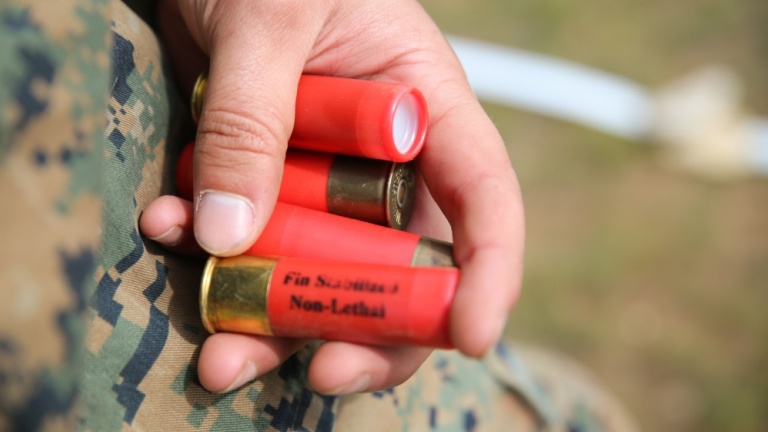Marine Corps Looking for a Taser-like Bullet

By Debbie Gregory.
The Marine Corps is looking for a bullet that can deliver an electric jolt like a Taser.
The service branch wants a wireless human electro-muscular incapacitation (HEMI) round with a range of at least 100 meters (328 feet), a non-lethal weapon designed to temporarily incapacitate individuals for at least thirty seconds, ideally longer. The goal is a non-lethal weapon that can be used by the joint services, the Department of Homeland Security, the Department of State, the Department of Justice, the Secret Service, Customs and Border Protection and law enforcement.
HEMI rounds have undergone extensive human effects testing and analysis. The Air Force Research Laboratory, Human Effects Center of Excellence, Naval Health Research Laboratory and contracted researchers from academia have done extensive work to understand and characterize electro-muscular incapacitation effects at various exposure durations.
The bullet would deliver a jolt of around 50 Coulombs, which is a measure of electrical charge, and would utilize a tiny but powerful battery that can fit inside a bullet-sized munition.
Specifications for the HEMI round include having a minimum safe distance of at least sixteen feet, with a velocity slow enough not to injure the target. The bullet price point should also be less than $1,000 per round. Additionally, the HEMI round must be fired from conventional small arms.
The Marines want the ability to incapacitate for more than three minutes, enough jolt to stun but not enough to kill. It should be noted that a civilian police Taser jolts for just five seconds, yet an independent investigation found that more than 1,000 people have died fully or partly from Tasers.
Additional risks associated with Tasers include seizures, collapsed lungs, skin burns or eye damage, injuries to muscles, joints or tendons and head injuries from uncontrolled falls. And there is new evidence that suggests that Tasers may lead to fatal cardiac events.







